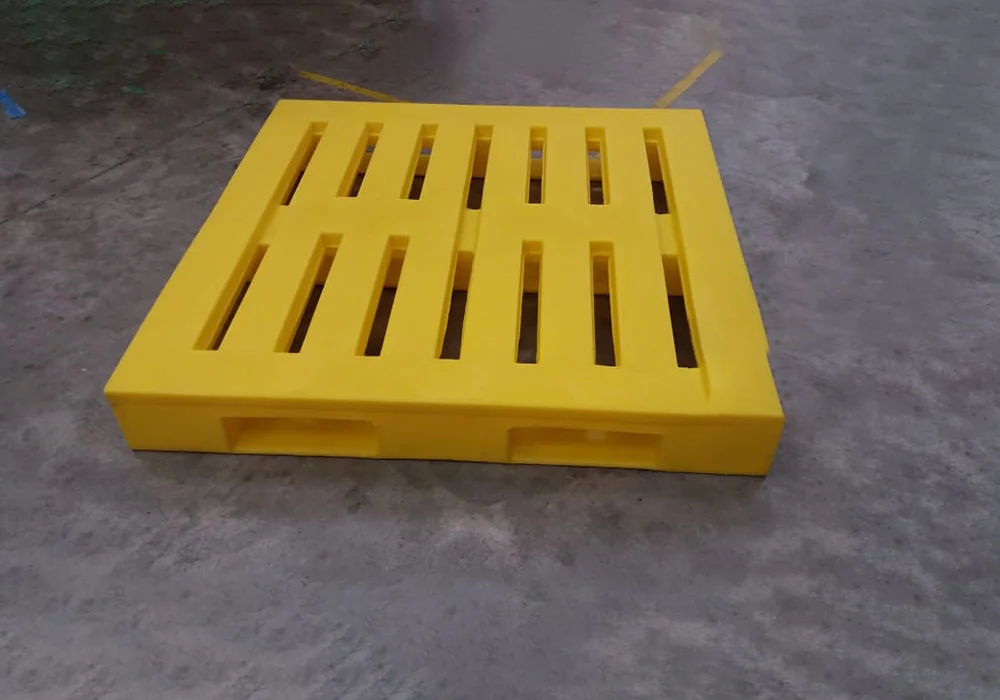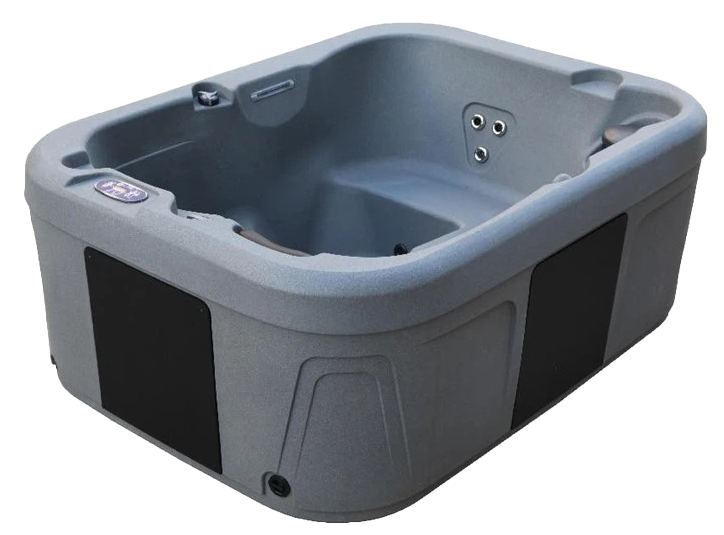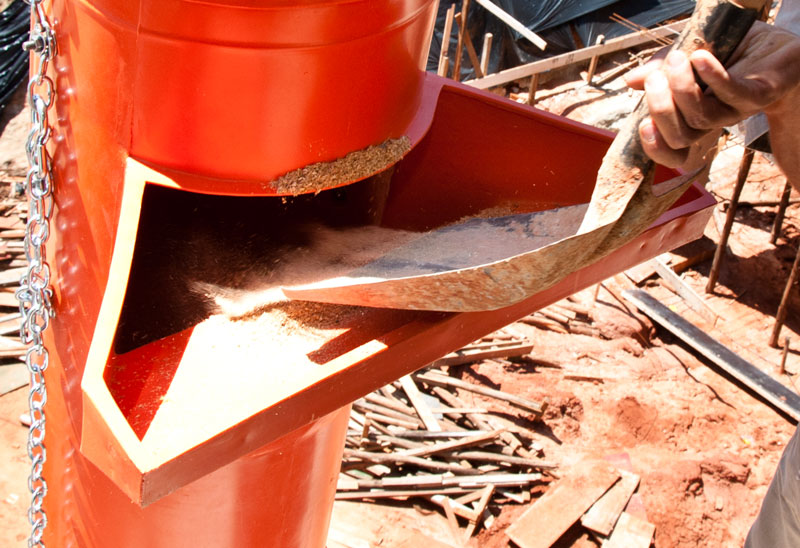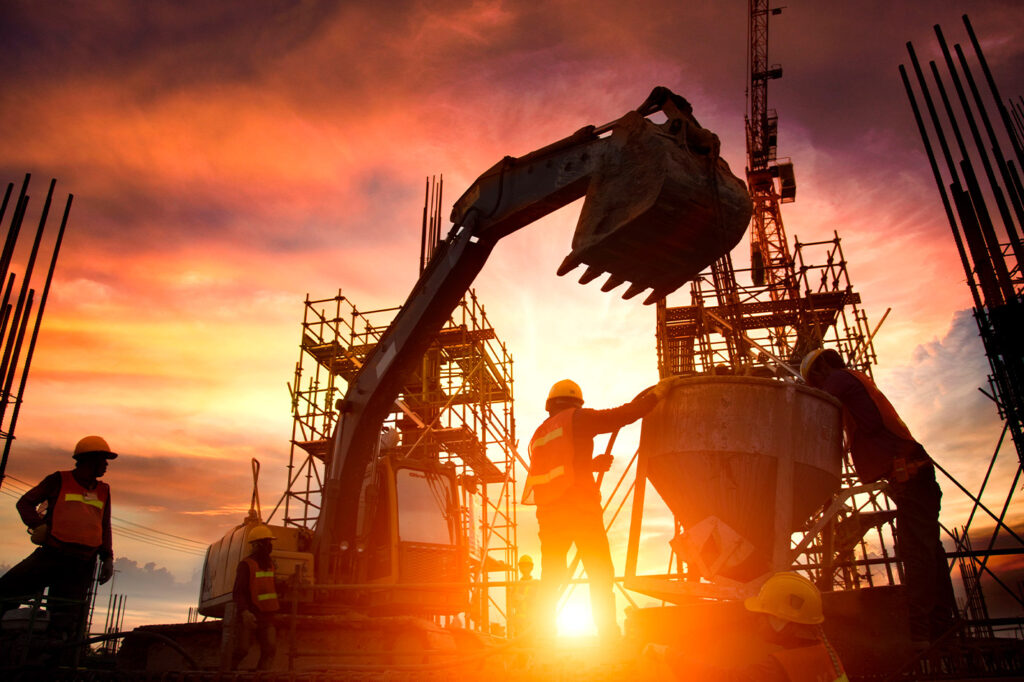In the realm of construction, rotomolding emerges as a technique technique capable of revolutionizing the production of essential components, such as water tanks, chemical containment tanksand even urban furniture. Choosing a production process is not just a technical issue. It is also a strategic decision that ensures the Efficiency and durability of parts. This article aims to delve into the particularities of rotational molding and unveil the benefits and applications of this technology in the construction industry, presenting innovations ranging from plastic floors and coatings to acoustic barriers. We will navigate through the universe of plastic parts for modular structures and we will evaluate how rotomolding is paving the way for more efficient and sustainable construction.
Impact of Rotomolding in Construction: A Technical Perspective
The Rotomolding emerges amid manufacturing techniques, leaving its permanent mark on the construction industry. It presents itself not just as an alternative but as a revolutionary method in creating components where complexity and precision are as crucial as technical performance. In this sector, the need for robust and reliable parts is more than a desire; it is a fundamental requirement.
With its operational versatility, rotomolding is a technique allowing the production of a range of indispensable products. Buckets and containers for material transport to rotomolded inspection chambers and sewage boxes boxes are just a few examples. Furthermore, its ability to produce high-quality containment barriers, acoustic barriers as well as plastic furniture and decorative elementssignificantly enhances its value for the sector.
The choice of robust materials and the precision of the process ensure that each part designed for construction surpasses obstacles posed by environmental factors and continuous use. In this sense, rotomolding aligns perfectly with the demand for durability and resistance. After all, these attributes make its products both viable and attractive solutions for the construction industry.
Beyond construction
The technical impact of rotomolding extends to the production of Pallets and Platforms for Construction Logistics, crucial elements for the efficient movement and storage of materials. These often nderestimated pieces are designed to bear considerable loads, demonstrating the capability of rotomolding to create items that withstand the weight of expectations and practical reality.

- The technique allows molding seamless and uniform parts, reducing weak points and potential structural failures
- It offers design freedom, enabling the creation of pieces with complex and varied shapes that would be difficult or impossible to achieve through other processes.
- It contributes to energy efficiency, as insulating materials can be easily integrated during the rotomolding process, as seen with Thermal Insulation Blocks..
- Strengthens the commitment to sustainability in construction, as the precision of the process minimizes material waste, and the produced parts are often recyclable.
In summary, rotomolding is not just a production tool – it is an engine of innovation and efficiency propelling the construction industry into the future. By combining refined technique with the ability to create pieces that stand the test of time and use, rotomolding positions itself as a pillar for an ever-evolving sector, where each piece is a brick in the construction of progress.
Sinks and Bathtubs: Innovative Design and Technical Durability
A Rotomolding has transformed the face of construction not only in terms of innovationbut also by providing surprising technical durability to essential pieces like sinks and bathtubs. Let's delve into the universe of this technique and discover how it shapes the comfort and aesthetics of modern homes.
Imagine creating a sink or bathtub that not only perfectly aligns with the design of the environment but also bravely withstands the rigors of daily use. This is the power of rotomolding, which, with innovative design, allows customization of shapes, offering freedom for architects and designers to create unique pieces.

- Easy adaptation to any architectural project, thanks to the flexibility of the molding process.
- Variety of textures and finishes, enabling customization according to customer preferences.
- Uniformity and consistency of surfaces, resulting in superior aesthetic quality.
Technical quality is fundamental
In addition to visual appeal, pieces produced by rotomolding shine when it comes to technical durability. They are manufactured to withstand constant moisture and exposure to chemicals, typical in bathrooms. Rotomolded sinks and bathtubs not only remain visually appealing over the years but also resist cracks and deformations, ensuring longevity to the investment.
We must not forget to mention the resistance that these pieces exhibit compared to other conventional materials. Rotomolding offers a unique solution for environments that require constant hygiene and maintenance, as non-porous surfaces prevent the accumulation of dirt and bacteria, facilitating cleaning and contributing to user health.
The Innovations in Rotomolding for Sustainability in Construction are more present than ever, and rotomolding is at the forefront of this revolution, making it possible to develop pieces with efficiency, beauty, and functionality. By choosing rotomolded sinks and bathtubs, consumers opt for a solution that addresses both aesthetics and resistance. This is a true marriage of form and function that meets the demands of the construction industry for high-performance and long-lasting products.
Thermal Insulation Blocks: Energy Efficiency with Rotomolding
When it comes to energy efficiency in buildings, thermal insulation blocks produced through Rotomolding emerge as silent but powerful protagonists. This cutting-edge technology revolutionizes the way we think about insulation, combining technical precision with environmental awareness, two fundamental pillars of modern construction. But what makes rotomolding a process so aligned with the demands for more sustainable and efficient buildings?
Rotomolding allows the creation of thermal insulation blocks with superior insulating properties. This happens because of its ability to mold plastics into complex shapes, maintaining thickness uniformity without seams, crucial to avoiding thermal bridges. In this process, materials are carefully selected to provide the maximum barrier against heat transfer. This results in indoor environments with more stable temperatures, consequently reducing the load on heating and cooling systems.
- Reduction in energy consumption With thermal insulation blocks, buildings demand less energy to maintain thermal comfort, translating, for example, into savings on electricity bills and fewer carbon emissions.
- Durability and resistance: Thermal insulation blocks made by rotomolding are designed to withstand the test of time, minimizing the need for maintenance or replacement, further contributing to the project's sustainability.
Other benefits
When comparing rotomolded thermal insulation blocks with other materials traditionally used for the same purpose, such as fiberglass or expanded polystyrene, the advantages become even more evident. Besides being an excellent thermal insulator, rotomolded plastic does not absorb moisture and is immune to many chemical agents, extending its lifespan compared to other market options.
Another significant benefit of thermal insulation blocks produced via rotomolding lies in their contribution to the energy efficiency of buildings. The ability to maintain stable internal temperature means less fluctuation and resource use for air conditioning. Certainly, this is a significant step towards optimizing energy consumption and reducing environmental impact.
Therefore, thermal insulation blocks manufactured through the ingenious rotomolding process represent more than a technical choice. They are a commitment to the future – a future where buildings not only rise but coexist harmoniously with the environment, caring for resources and offering unprecedented comfort.
Resistance to Elements: Rotomolded Pieces as Durable Solutions
When discussing construction, we often face a constant challenge: the need for materials that withstand the test of time and the elements of nature. Rotomolding emerges as an effective solution in this scenario, offering robust and durable pieces that face sun, rain, moisture, and a variety of chemicals without compromising their structural integrity.
Materials produced through rotomolding are known for their high resistance to environmental factors. This resistance is particularly crucial in construction, where components are continually exposed and cannot fail. UV rays, for example, can cause aging and degradation of many plastics, but rotomolded pieces are often manufactured with UV additives that protect them from solar wear.
Moreover, moisture is a common enemy of many construction materials. However, rotomolded pieces, thanks to their non-porous nature and appropriate polymer selection, do not allow water infiltration, making them resistant to mold, rust, and corrosion – issues that often afflict materials like metal and wood.
Another significant quality is the resistance of these pieces to a range of chemicals. In areas where corrosive substances are a concern, such as in industrial plants or laboratories, rotomolded components maintain their performance without deterioration, which is a critical factor for safety and structural longevity.
In summary:
- Durability in outdoor environments: : Pieces exposed to natural elements maintain their integrity for years.
- Chemical resistance: An effective barrier against substances that could compromise other materials.
- Non-reactivity to moisture: Immunity to issues like mold and rust common in metals.
- UV protection: Special additives are included to prevent pieces from deteriorating with sun exposure.
This combination of factors makes rotomolded pieces highly preferred components in construction projects. Not only for their ability to resist environmental rigors but also for the positive economic impact by reducing the need for frequent maintenance and replacement. Resistance in indoor and outdoor environments makes rotomolding a versatile and intelligent choice in various construction applications.
By choosing rotomolded pieces, builders and architects opt for resilient and durable construction, reflecting a commitment to quality and longevity.
The future of construction comprises materials that offer not only energy efficiency and pleasing aesthetics but also fortitude against time and the elements. Rotomolded pieces are the modern armor in this battle, ensuring that structures not only survive but thrive in the face of nature's challenges.
Ease of Installation: Reducing Technical Challenges in Construction
Rotomolding stands out as a technology ally in optimizing time and reducing technical complexities during the installation of components in construction. This revolutionary technique allows components to be produced with features that significantly simplify the assembly and application process on the construction site. Let's unravel how this ease of installation transforms construction procedures.
Lightweight and Practical Handling
These are inherent aspects of rotomolded pieces. Due to the nature of the rotomolding process, pieces tend to be lighter when compared to molded concrete or metal. This characteristic reduces the need for heavy equipment for the transportation and placement of pieces, streamlining the process and cutting costs.
- Less heavy equipment on-site
- Reduced cost of machinery and labor
- Faster and more efficient installation
Furthermore, the precise shaping of of rotomolded pieces allows perfect fits, decreasing the need for adjustments and corrections during installation. Each piece fits into another with the precision of a well-designed puzzle, enabling quicker assembly and reducing the margin of error.
A Modularity is another advantage of rotomolding worth mentioning. The ability to create modular pieces that easily fit together opens doors to more dynamic and adaptable projects. With rotomolding, the construction industry can benefit from creating systems that facilitate both assembly and future maintenance.

The strength of the material used in the rotomolding process adds another positive point. Since pieces are designed to withstand adverse conditions, they arrive at the installation site with the necessary robustness. Therefore, it eliminates the need for additional protections and post-treatment. Consequently, the installation process is not only facilitated but also the component's lifespan is extended.
By ensuring pieces with high quality, intelligent design and ease of installationreduces common technical challenges in construction. While contributing to a cleaner, faster, and more economical construction execution.
Sustainability in Construction: Reducing Waste with Rotomolding
A Rotomolding emerges as a strategic ally in the pursuit of more sustainable practices in the construction industry. A technique that goes beyond technical efficiency, shaping the environmental consciousness of the sector.
Waste reduction
With precision in material usage, rotomolding contributes to the reduction of solid waste, aligning itself with environmental management policies.
Recycling
Defective or end-of-life pieces can be easily transformed through recycling, generating a longer and more sustainable life cycle for products.
Green buildings
By integrating rotomolded components, construction projects gain points in sustainability certifications, such as LEED, reinforcing the environmental commitment of buildings.
Therefore, choosing Rotomolding in the manufacturing of construction parts not only optimizes durability and technical efficiency but also solidifies ecological responsibility, essential for the sustainable development of the sector.





